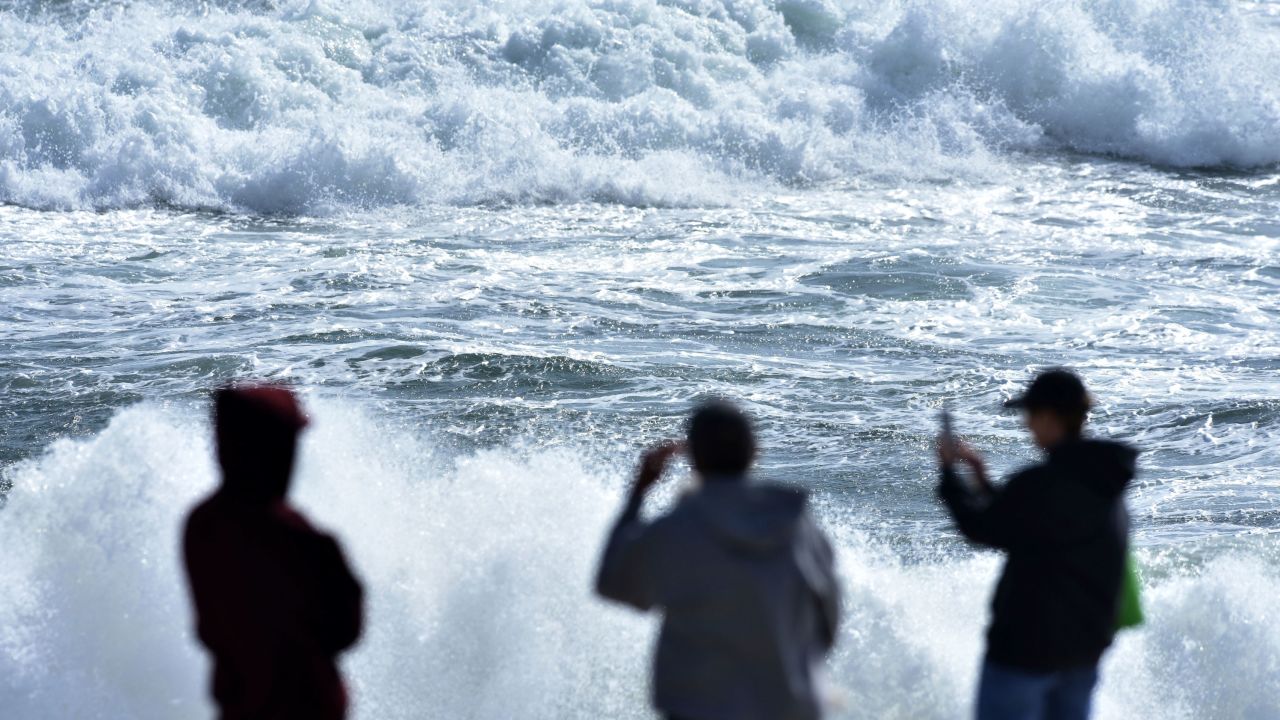(CNN) — Lee, now a post-tropical storm, continues to produce hurricane-force winds while bringing rain to southeastern New England and parts of Atlantic Canada, according to a Saturday morning update from the National Hurricane Center.
“Lee is expected to be at or below hurricane strength when it reaches Nova Scotia later today. “Lee is forecast to weaken tonight and Sunday as it moves across Atlantic Canada,” the National Hurricane Center said in a 5 a.m. Miami time advisory Saturday.
The most significant impacts in the United States are the potential for some coastal flooding and tropical storm-force winds, where a state of emergency has been declared along the New England coast, particularly in Maine. A hurricane warning has been issued for the southern coast of the Canadian provinces of New Brunswick and Nova Scotia.
Despite being hundreds of miles off the U.S. East Coast, tropical storm conditions hit the coasts of Massachusetts and Nova Scotia early Saturday, and forecasters said similar impacts appeared in Maine.
“These conditions are likely to result in downed trees and power outages,” the hurricane center warned.
In addition to strong winds, Lee could unleash up to 6 inches of rain in northern Maine on Saturday. Neighboring New Hampshire, Massachusetts and Rhode Island are also likely to experience heavy rain. Massachusetts Governor Maura Healey declared a state of emergency Friday because of the storm.
A tropical storm warning is in effect for Massachusetts’ coasts north to Maine, including the popular islands of Martha’s Vineyard and Nantucket off the coast of Massachusetts. The warning has also been extended as far north as Canada.
Along the coast of Long Island Sound north through Maine, if Lee’s tide combines with high tide, flooding from 12 to 3 feet above ground is possible, said Michael Brennan, director of the National Water Center.
Throughout Saturday, Lee is expected to approach the New England coast and Atlantic Canada. “Lee is then expected to turn to the north-northeast and northeast and cross Atlantic Canada on Saturday night and Sunday,” the hurricane center said.
Residents of coastal Canada and the United States have been urged to stay home
Jamie Rome, deputy director of the National Hurricane Center, warned people to avoid driving near the coast and urged people to stay home to weather the storm.
He also noted that there is a high risk of rip currents from South Florida north to Maine. “The waves from this major hurricane will create a current that goes out to sea and sweeps you away,” Rome said Friday night. . “So if you go to the beach this weekend, swim near a lifeguard.”
In anticipation of these dangerous waves, local authorities in Toms River (New Jersey) have banned swimming at Ortley Beach this weekend, according to a press release from the municipality. Violators may be fined.
“Lifeguards will be on duty Saturday and Sunday from 9 a.m. to 5 p.m. to enforce the bathing ban. The beach will remain open,” officials said in a news release Friday.
Meanwhile, in Canada, officials in New Brunswick warned residents to prepare for power outages and stockpile food and medicine for at least 72 hours, while encouraging people to stay home.
“When a storm hits, remember to stay home if possible,” said Kyle Leavitt, director of the New Brunswick Emergency Management Agency.
CNN’s Michelle Watson, Jessica Xing and Maria Sole Campinoti contributed to this report.


:quality(85)/cloudfront-us-east-1.images.arcpublishing.com/infobae/NNWRI25KEFEK5MAJRQZIC5SEW4.jpg)

:quality(85)/cloudfront-us-east-1.images.arcpublishing.com/infobae/22NNU5QOZFFEBMQNJWOON4ZUUA.jpg)
